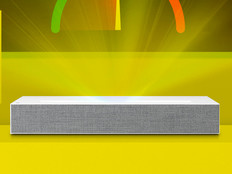Learning in 3D
Entertaining in three dimensions isn't new. But it's become all the rage in the consumer space in recent years, with filmmakers frequently delivering their movies in action-packed, seat-gripping 3D.
Having noticed that young audiences love the realism of 3D, schools are beginning to incorporate the technology into their classrooms, reasoning that anything that actively engages students and increases their motivation to learn is a great thing. To meet demand, product manufacturers and content developers are rolling out 3D-ready TVs, projectors, cameras, editing software and curricula.
"The idea behind offering 3D content in the classroom is to create an immersive experience for students, thereby gaining greater engagement and learning," says Michelle Abraham, research director at In-Stat, a market intelligence firm in Scottsdale, Ariz. The content can be purchased from a growing number of producers or developed using 3D-friendly cameras and editing software.
The two types of 3D technology, active and passive, offer different benefits, but Abraham recommends the passive approach for schools. "Passive solutions work well in the classroom because the glasses are fairly lightweight and relatively inexpensive, so if a student loses or drops them, it's not a huge loss," she explains. Active 3D, on the other hand, uses "active" glasses, which require batteries and cost significantly more. Both technologies work with 3D-ready projectors and with most 3D educational content.
Profiles in Innovation
Florida's Ocoee Middle School is among the pioneering schools that have embraced 3D. Texas Instruments provided the school with several 3D-ready projectors, including the Mitsubishi XD600U, which features the company's Digital Light Processing (DLP) technology (see sidebar).
Instructional Technology Coach Tony SanFilippo says the school's transition to 3D was "really simple," noting that its teachers have been "on board with new technology" for quite some time. The hard part was finding relevant content.
Also in this Issue
A recent study of 3D's efficacy in the classroom is highlighted in "Three Cheers for 3D."
"Last year, the curriculum was more of a hindrance than the technology," SanFilippo says, because 3D middle school curriculum content "isn't as available or easy to make as it is for high school." Because the science content in middle school is so basic, teachers simply extracted high school science 3D content that applied to their lessons. For instance, one teacher recently "took apart" a volcano and showed students how the magma flows. It was more compelling for students to see the flow in 3D than anything she could have shown on paper, he explains.
Because the technology creates excitement about the material, SanFilippo will replace remaining projectors with 3D-ready units when they reach the end of their lifecycle.
At Union City (N.J.) Public Schools, 3D adoption is just getting started. Janice Sheehy, supervisor of technology and information systems, is currently researching the technology and considering several brands of 3D-ready projectors that can project 2D without losing clarity. The district's goal, she says, is to install 3D projectors in the media center and science lab of a new elementary school that's slated to open next fall.
Because Union City is a low-income district with a 92 percent Limited English Proficiency rate, Sheehy believes the visually rich learning experience 3D delivers will be especially valuable for nonnative English speakers.
How DLP Works
Texas Instruments introduced Digital Light Processing (DLP) to the consumer electronics market in 1996. The trademarked technology is based on an optical semiconductor called a digital micromirror device (DMD), an extremely accurate light switch that enables light to be digitally modulated. It does this with a rectangular array of microscopic mirrors that correspond to light in a projected image.
When a digital video signal enters the DLP system, it activates a small electrode underneath each mirror, causing it to tilt. Depending on which way the mirror tilts, it either reflects a single white pixel or switches off, resulting in a dark pixel space.
DMDs produce more than 1,024 shades of gray, creating highly detailed grayscale images. In most DLP systems, color is added by placing a color wheel between the light source and DMD panel. As it spins, red, green and blue light fall on the mirrors, creating more than 16 million different colors.






